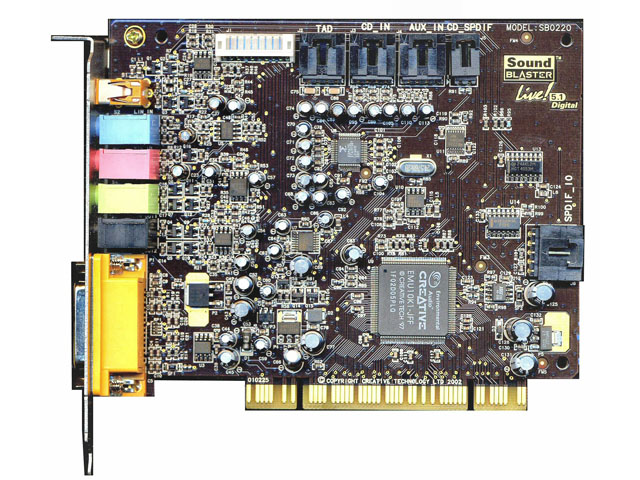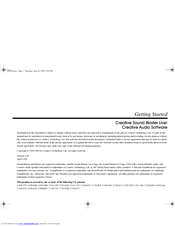
This is not limited to Creative sound cards Aureal, Ensoniq, Philips, and other manufacturers have made cards that use four-speaker output in the same fashion. Games see a "4.1" speaker system as quadraphonic because DirectSound itself offers no subwoofer output in this configuration. Instead, a low-pass filter (crossover) within the speaker system removes high and midrange frequencies from the sound card's output for the subwoofer. While this is the case, the subwoofer is not on a separate output as it is with 5.1 and higher audio.

#SB0060 DRIVER SOFTWARE#
The software referred to this as a "4.1" setup, meaning 4 satellites and a subwoofer. Sound Blaster Live! supported multi-speaker output, initially up to a 4-speaker setup. Creative addressed this concern by recommending audio-recording be performed exclusively at 48 kHz, and use third-party software to handle the desired sample-rate conversion, to avoid using the EMU10K1's sample-rate conversion. The SB/Live had great difficulty with resampling audio-CD source material (44.1 kHz) without introducing audible distortion. However, the rate-conversion was only applied when the audio signal was passed through the effects engine. This rate-conversion step introduced intermodulation distortion into the downsampled output. The DSP had an internal fixed sample rate of 48 kHz, a standard AC'97 clock, meaning that the EMU10K1 always captured external audio-sources at the 48 kHz, then performed a sample-rate conversion on the 48 kHz waveform to the output the requested target rate (such as 44.1 kHz or 32 kHz). Unfortunately, digital processing brought some limitations. The Sound Blaster Live! featured higher audio quality than previous Sound Blasters, as it processed the sound digitally at every stage, and because of its greater chip integration that reduced the analog signal losses of older, larger cards.
#SB0060 DRIVER CODE#
The effects were written in a language similar to C, and compiled into native FX8010 object code by its compiler, fxasm. The Effect algorithms were created by a development system that integrated into Microsoft Developer Studio. This capability let users select a pre-defined listening environment from a control-panel application (concert hall, theater, headphones, etc.) It also provided hardware-acceleration for EAX, Creative's environmental audio technology. It provided real-time postprocessing effects (such as reverb, flanging, or chorus). The integrated FX8010 was a 32-bit programmable processor with 1 kilobyte of instruction memory. This was possible at this point because systems were being equipped with far more RAM than previously, and PCI offered far faster and more efficient data transfer than the old ISA bus. Ī major design change from its predecessor (the EMU8000) was that the EMU10K1 used system memory, accessed over the PCI bus, for the wavetable samples, rather than using expensive on-board memory. The EMU10K1 featured hardware acceleration for DirectSound and EAX 1.0 and 2.0 ( environmental audio extensions), along with a high-quality 64-voice MIDI sample-based synthesizer and an integrated FX8010 DSP chip for real-time digital audio effects. Manufactured in a 0.35 µm 3-metal-layer CMOS process, it is a 2.44 million transistor ASIC rated at 1000 MIPS.

Sound Blaster Live! (August 1998) saw the introduction of the EMU10K1 audio processor.


Sound Blaster Live! Value / Compaq / Intel / IBM / NEC


 0 kommentar(er)
0 kommentar(er)
